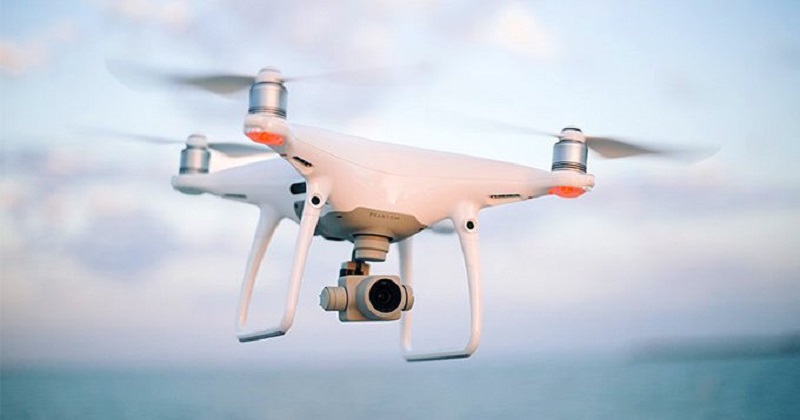
Noida: Drones are rapidly transforming the world’s technology. They account for a wide variety of applications, from simple aerial photography to delivering small payloads from one place to another.
Potentially, the list is endless. In most cases, drones are tiny, agile and can access areas that are impossible for humans. For example, they can be used for spraying insecticides over fields and installing sensors deep in the jungles for forest monitoring.
Just like any other technology, their use is heavily influenced by the intentions of the human pilot. This implies that drones may be used illegally or destructively by miscreants, as was the case with the recent attack on the Indian Air Force station in Jammu.
Furthermore, they can just as easily malfunction, causing unintended harm to others. Therefore, it is very important to regulate their ownership and use. Earlier this year, the government of India did the same with the Unmanned Aircraft System Rules, 2021, issued by the Ministry of Civil Aviation.
India’s new drone laws and regulations apply to anyone who intends to operate an unmanned aircraft system (UAS). Here is a summary of what the regulations say vis-a-vis how you can fly a drone in the country.
The ability to fly a drone in India is determined by the type of drone and the corresponding permit and license required. According to the size of the drone, the following categories have been listed in the Gazette:
Nano Drones: These are drones that weigh less than or equal to 250 grams. Unmanned Aircraft System Rules, 2021, state that no license or permit is required to fly such drones.
Micro and Small Drones: Microdrones weigh more than 250 grams but less than 2 kilograms. The latter, Small drones, refers to unmanned aerial systems weighing more than 2 kg but less than 25 kg. The operators of such drones must have a UAS Operator Permit-I (UAOP-I) to fly them.
Drone pilots will be required to follow the Standard Operating Procedure (SOP) as established by the Directorate General of Civil Aviation (DGCA). The permit will allow the operation of such drones within a visual line of sight without any payload.
Medium and Large Drones: The guidelines define medium drones as those weighing more than 25 kg but less than 150 kg, while large drones are those weighing more than 150 kg. To operate either, one would need a UAS Operator Permit-II (UAOP-II).
DGCA has also established conditions for flying drones, and pilots must follow them. For example, such drones cannot fly in enclosed areas. Before flying, they must receive clearance from Air Traffic and Air Defence Control.
To ensure a safe operation, operators must also implement a Safety Management System (SMS). UAOP-II permits the carriage of both goods and dangerous goods under the Aircraft (Carriage of Dangerous Goods) Rules, 2003.
Under UAOP-II, holders can also use Micro and Small drones to transport goods, subject to the Operations Manual and DGCA approval. UAOP-I and UAOP-II are valid for a period of ten years.
Required drone pilot license
The issuance of an operator’s permit is determined by two types of licenses. They are Student Remote Pilot licenses and Remote Pilot licenses. To apply for any of these licenses, the applicants should be at least 18 years of age and not more than 65 years of age if flying a drone for commercial activity.
For the minimum qualifications, the applicants should have passed class X or ‘its equivalent examination from a recognized Board.’ The DGCA also requires applicants to pass a medical examination and a background check.
Here’s what the two drone pilot licenses entail:
Student Remote Pilot License: This license is valid for a maximum of 5 years from the date of issuance and is issued by an authorized training organization for a fee. These can be renewed for an additional period of 2 years.
Remote Pilot License: The DGCA issues these licenses for a fee and they are valid for a period of 10 years. These are issued based on training and skills tests conducted by authorized training organizations. After 10 years, a Remote Pilot License can be renewed.
Both UAOP-I and UAOP-II require a Remote Pilot License ‘of the appropriate class and category.’
Conditions for using drone
There are, of course, many constraints on drone use even if you manage to attain these licenses and permissions. The most noticeable one is that no drones should fly over a Prohibited Area. The Gazette defines ‘Prohibited Area’ as ‘the airspace of defined dimensions, above India’s land areas or territorial waters within which the flights of unmanned aircraft are not permitted.’
Other than area restrictions, drones have speed and altitude limitations. These are mostly determined by the type of drone. Microdrones, for example, cannot fly higher than 60 meters above ground level (AGL) or faster than 25 meters per second. For Small drones, the restrictions are 120 meters above ground level and 25 meters per second.
In addition, there are several other restrictions, and those planning to own or operate a drone should read through Unmanned Aircraft System Rules, 2021.
Penalties for non-compliance
The Gazette details penalties for several acts that contravene its guidelines. Among these are flying a drone without a license or permit and flying over restricted areas.
Any person who flies a drone other than the Nano category without a valid license or permit will have to pay Rs 25,000 as a fine. A penalty of Rs 50,000 will be assessed for flying an unmanned aircraft over no-operation areas.
In some cases, drone manufacturers have penalized up to Rs 5 lakh. Thus, drone buyers, pilots and even manufacturers are advised to read and follow all the guidelines as mentioned in the Gazette regarding drone use in India.

Post Your Comments